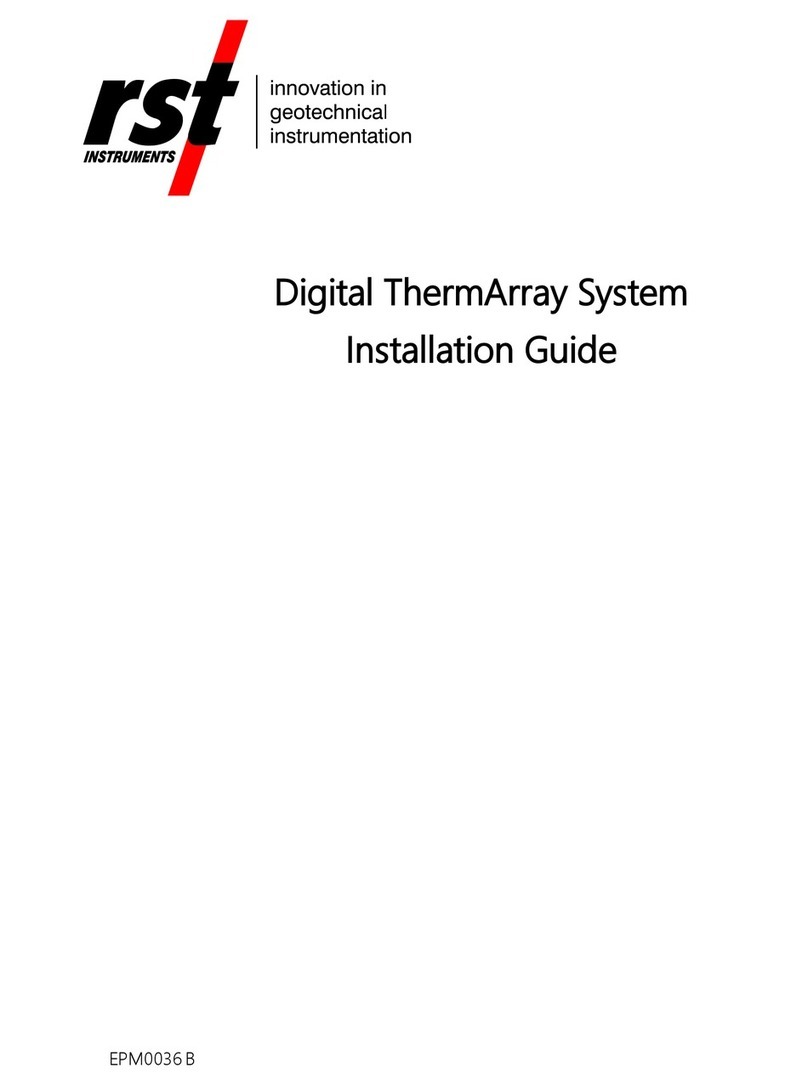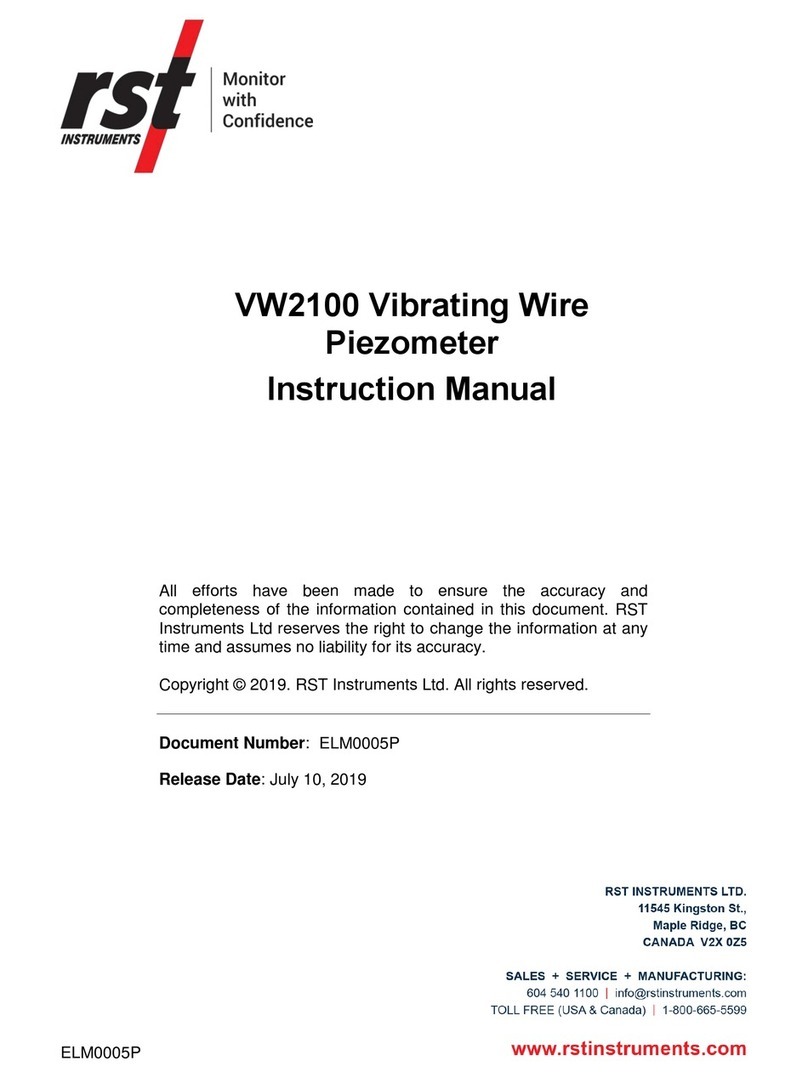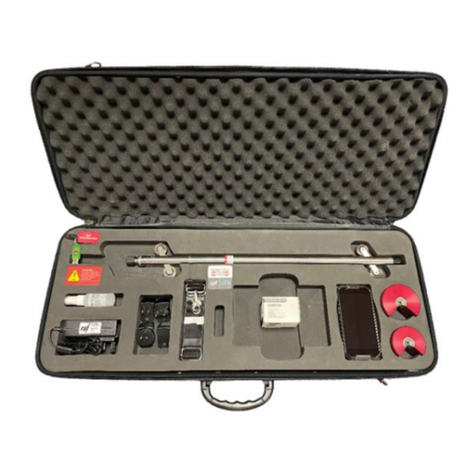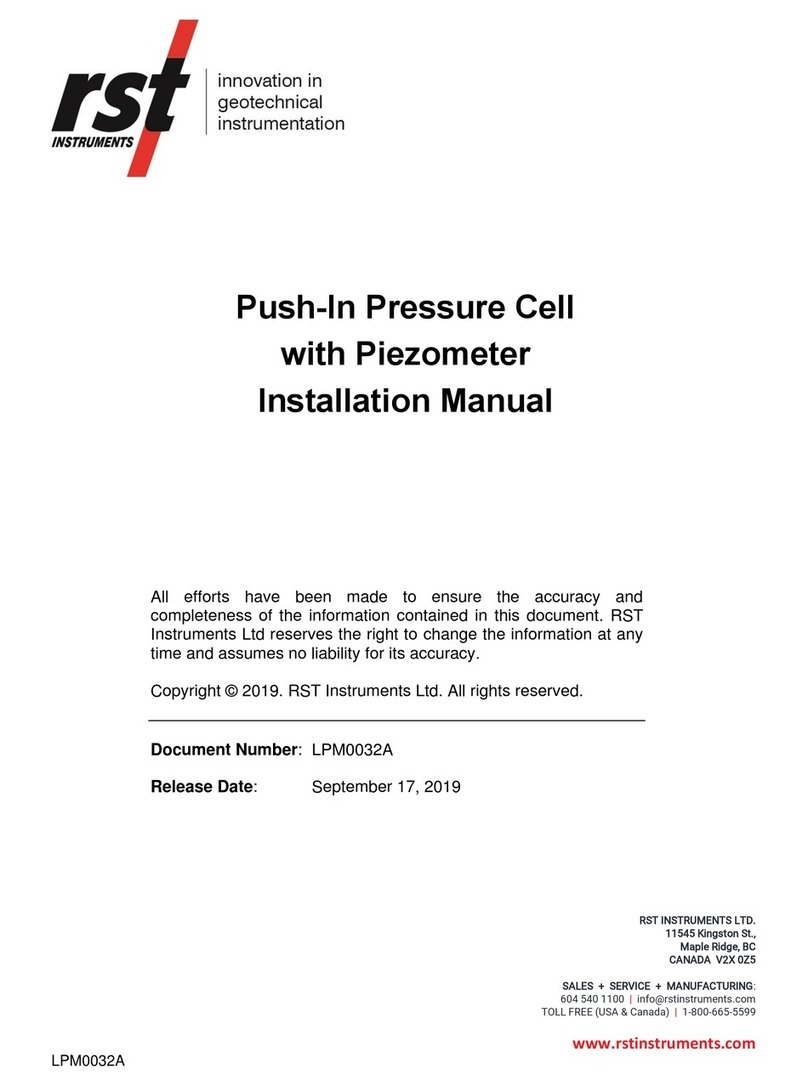TABLE OF CONTENTS
1INTRODUCTION ............................................................................................................1
2DIGITAL PROBE...........................................................................................................3
DUMMY PROBE......................................................................................................4
SIGN CONVENTION AND MEASURED DEVIATION........................................................4
TAKING READINGS .................................................................................................7
3INCLINOMETER CABLE AND REEL..................................................................................9
INCLINOMETER REEL BATTERY..............................................................................10
CHARGING THE BATTERY (FOR REELS WITH SERIAL NUMBER OF 2500 OR HIGHER) ....11
WIRELESS COMMUNICATION.................................................................................11
4ANDROID DIGITAL INCLINOMETER APP ........................................................................12
REQUIREMENTS...................................................................................................12
DEVICE RECOMMENDATIONS ................................................................................12
4.2.1 SAMSUNG GALAXY TAB ACTIVE 2....................................................................13
4.2.2 JUNIPER MESA3 ............................................................................................14
4.2.3 JUNIPER CP3................................................................................................15
DIGITAL INCLINOMETER APP WORKFLOW...............................................................16
4.3.1 INSTALL OR UPDATE THE APP .........................................................................16
4.3.2 ANDROID SETTINGS PRE-REQUISITES..............................................................16
4.3.3 APP USER INTERFACE ORGANIZATION.............................................................17
4.3.4 WORKFLOW OVERVIEW..................................................................................18
4.3.5 VIEW SITE LIST..............................................................................................19
4.3.6 VIEW BOREHOLE LIST ....................................................................................20
4.3.7 VIEW READINGS LIST .....................................................................................21
4.3.8 VIEW READINGS LIST -COMPARISON GRAPH ...................................................21
4.3.9 ADD READINGS..............................................................................................23
4.3.10 ADD READINGS –DELETE AND CONFIGURE...................................................26
4.3.11 ADD READINGS -DATA AND GRAPH..............................................................27
4.3.12 EXPORT READING FILES OVERVIEW..............................................................28
4.3.13 EXPORT READING FILES TO ANDROID DEVICE (INTERNAL STORAGE)...............29
4.3.14 EXPORT READING FILES TO EMAIL RECIPIENTS..............................................29
4.3.15 IMPORT READING FILES OVERVIEW...............................................................30
4.3.16 IMPORT FILES FROM ANDROID INTERNAL STORAGE .......................................30
4.3.17 IMPORT ZIP FILE FROM STORAGE ................................................................31
4.3.18 REEL AND PROBE STATUS...........................................................................31
4.3.19 DEVICES LIST .............................................................................................32
4.3.20 REEL AND PROBE INFORMATION ..................................................................32
5PROBE TYPES...........................................................................................................33
VERTICAL PROBE.................................................................................................33
HORIZONTAL PROBE ............................................................................................33
INCLINE PROBE....................................................................................................34
COMPASS PROBE ................................................................................................34

































